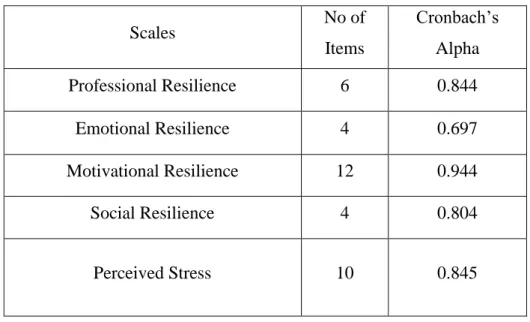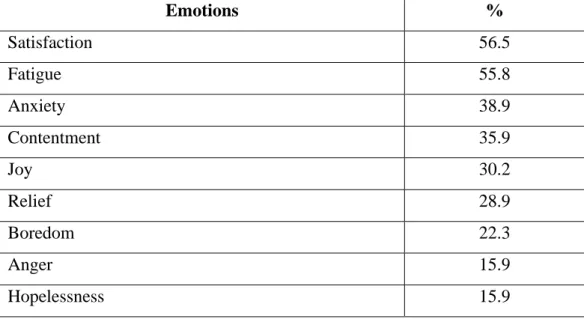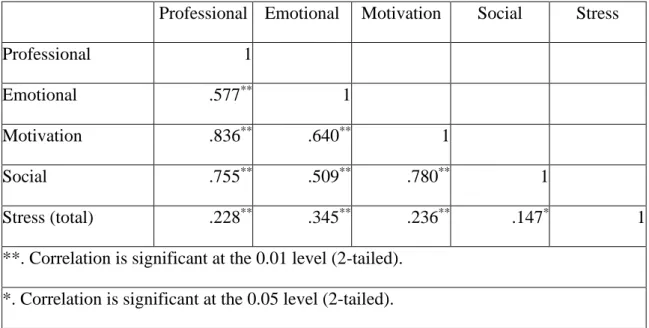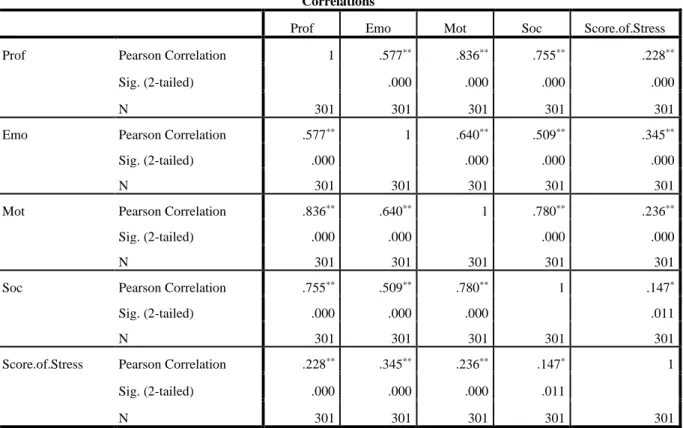As part of the qualitative method, interviews were conducted to further explore the quantitative results. In addition, a brief history of the Covid19 pandemic is cited, as well as its impact on teaching. Finally, in the fifth chapter, a discussion of the results takes place, and the research questions set in the third chapter are answered.
Psychology of Teachers
- Motivation
- Psychological capital
- Stress
- Resilience: risk & protective factors
- Well-being
The concept has been heavily criticized as unrealistic or even a deception (Luthans et al., 2007). As Luthans, Youssef, and Avolio state (Luthans et al., 2007), there are five specific and useful characteristics of self-efficacy. Teachers' well-being is strongly dependent on three variables (stress, burnout and anxiety) that negatively affect their psychological capital (Karakus et al., 2019, p. 364).
The Greek ELT Context and Technology
EFL Context in Greece
- Public sector
- Private sector
- Private tutoring
In addition, there are a number of administrative problems, such as the insufficient number of hours allocated to the teaching of English (Alexiou & Mattheoudakis, 2013) or the delayed hiring of contract teachers, and as a result students are taught English for no apparent reason (TENOR) (West, 1997). Basically, the overall goal is for students to be able to communicate in the foreign language ό και στο γυμνάσιο, 2016). Due to the fact that state schools do not satisfactorily meet the needs of students and Greek society, which dictates obtaining a C2 certificate before graduation (Kantaridou, Papadopoulou, & Angouri, 2018) so that students can concentrate on competitive university entrance exams and to be able to apply for a job immediately, parents resort to private foreign language institutions (frontisteria).
Types / Ways of Teaching English in Greece
- Face-to-face
- Online / Remote
- Synchronous / Asynchronous
- Blended / Hybrid
It resembles face-to-face communication, with all its advantages and disadvantages (Hrastinski, 2008). However, there is one thing they agree on; that the use of online platforms in blended learning is mainly a supplement to face-to-face education (Kaur. & Singh Bhat, 2020). One of the disadvantages of this method is based on students' unwillingness to adapt to the new environment and spend time getting used to it because they are so used to face-to-face learning (Kurthen & Smith.
Teaching through Crisis
- Teachers’ resilience through crisis situations in the past
- Brief history of the Covid19 pandemic
- Covid19 and its impact on teaching
This is why the World Health Organization (WHO) declared it a global pandemic in March 2020 (Bozkurt, et al., 2020). Formal education was interrupted and replaced by emergency distance learning (ERE) (Bozkurt, et al., 2020). Issues related to the GDPR (General Data Protection Regulation) have been raised as personal data needs to be protected (Bozkurt, et al., 2020).
Methodology
- Research questions
- Participants
- Instrument
- Quantitative method of research: questionnaire
- Qualitative method of research: interviews
- Research procedure
- Data analysis
Regarding the academic background of the research participants, the respondents were university graduates (bachelor's degree), while they hold a postgraduate degree and a teaching certificate (CELTA / DELTA / TESOL / TESL / TEFL / Proficiency or equivalent). Finally, regarding the current work environment, 41.9% of respondents worked at a state school (n = 126), while 28.6% The closed questions were chosen as the questionnaire in order to be easy to answer and not take up much of the respondents' time (Rahi, 2017).
Reliability was measured using Cronbach alpha, where values greater than 0.60 can be characterized as acceptable (George & Mallery, 2003). The qualitative part of the research focuses on the experiences of the participants and engages with the complexity of contexts, as a qualitatively driven mixed-methods approach does (Hall & Ryan, 2011). Three participants were selected to participate in the second part of the study: 1 private teacher and 1 teacher at a private language institute who showed pleasant emotions, and 1 teacher at a public school who showed extremely negative emotions.
At the end of the questionnaire, the participants were informed that this research will have a second part, namely an interview, in which they can participate if they wish. 2 of them were conducted in English and the other in Greek, respecting the wishes of the interviewees. The latter were informed and agreed to be enrolled for the sake of the study in order not to encounter legal problems.
Data analysis was done with SPSS v.23 statistical software for data analysis.

Results
Descriptive statistics
- Teacher emotions
- Difficulty of transition and teacher confidence
- Teacher resilience
- Teacher stress
Next follows a similar question, but regarding the 2nd lockdown: "During the 2nd lockdown, which of the following emotions did you experience during the lessons". In particular, the emotion showing the largest change from the 1st to the 2nd lockdown is anxiety, which decreased from 71.8% to 38.9%, while the emotion showing the least change is anger, which increased slightly from 15.3% to 15.9%. The rest of the emotions depicted an upward trend from one lockdown period to the next, with the highest being satisfaction (from 42.9% to 56.6%).
Initially, teachers were asked how difficult it was for them to adjust to online teaching at the start of the 1st lockdown, to which the majority responded that it was not that difficult (M = 2.48, max = 5). Regarding how confident they felt about teaching remotely after the 1st containment period, most of them were quite confident (M = 3.91, maximum = 5). Regarding the score of professional and emotional resilience, the mean rating of the sample is 4.11 with standard deviation of 0.62 for the former, and 3.45 with standard deviation of 0.69 for the latter.
Regarding motivational and social resilience, the mean rating of the sample is 4.06 with a standard deviation of 0.69 and 3.95 with a standard deviation of 0.72. The items related to teacher stress follow, and are introduced with the sentence "During the 2nd lockdown, how often do you feel. Specifically, the statement with the highest mean frequency is "felt confident in your ability to handle your personal problems" (M = 3.68, max = 5) followed by “felt things were going your way” (M = 3.54, max = 5 ).
Regarding the stress score, the mean rating of the sample is 3.25 with a standard deviation of 0.65.

Inferential statistics
- Correlation between resilience scales and stress
- The effect of age, education and work environment on the total stress score
A series of one-way anovas were performed to check the effect of the independent variables age, educational level and work environment on stress. In addition, the Scheffe method (see Appendix III, Table 11) reveals the existence of two groupings in the age groups in relation to stress. Taking these results together, it is observed that the group of age affects the values of the score of stress.
Taking these results together, it can be seen that academic background affects stress score values. Taking these results together, it is observed that the work environment affects the stress score values of the research sample. There were two open-ended questions in the questionnaire that the respondents had to fill in (see Appendix II a).
Especially in the 2nd closure, the positive experiences increased, mainly thanks to the previous work and the laying of the foundations in the 1st period of the closure. The interviews conducted within the framework of the qualitative research method actually verified the results of the quantitative work and confirmed the experiences stated in the open-ended questions (see Annex II b). The second teacher (T2) agreed with the first teacher's last comments about the parents, probably because of them.
The results of the study were presented in the fourth chapter of the dissertation, based on which the discussion will take place in the next chapter.

Discussion
- The Greek EFL teachers’ emotions during the lockdown periods
- The resilience rate of Greek EFL teachers
- The EFL teachers’ level of stress during the 2nd lockdown
- Correlation of resilience with stress
- The independent variables affecting teacher stress
- Implications & suggestions for future research
- Limitations of the study
This is probably due to the fact that some of them did not take advantage of the 1st period to properly organize their work, or they were not obliged to do so, as in the case of state school teachers who did not have to teach synchronously. but it only uses asynchronous platforms. A public school teacher stated in an interview: “(During the first lockdown) there was a period of two weeks where we did nothing. So, although they felt more satisfied teaching in period 2 than in period 1, stress was also present.
It has been claimed that the teaching profession is one of the most stressful jobs of the 21st century (Kyriacou, 2000). What could be assumed is that the former group was in the process. As the state school teacher claims in the interview: “Now that I am teaching synchronously, the stress is overwhelming for me” (see Appendix II b T3).
The results of this research can be a valuable tool in the hands of all involved stakeholders, such as national policy makers and EFL teachers. This, combined with the fairly high levels of stress in the 2nd lockdown and the emotions of anxiety and fatigue, which occupied the first two places in the 1st lockdown and the second and third places in the 2nd lockdown, could be an incentive for further research on the emotional intelligence of Greek teachers EFL. It's good to have a language behind you': the value of foreign languages in the Greek labor market.
Sultana, Private tutoring across the Mediterranean: Power dynamics and implications for learning and equity (pp. 93-113).
Quantitative method of research
Qualitative method of research
I was really pleased when my students were able to understand the grammar lesson through my online instruction. Not specific, but when I first started teaching online, I was happy that my lessons went well and my students performed similarly to face-to-face teaching. I was very anxious because online lessons were something new for my students and although it was a tiring situation they all went well in the end.
All my students responded well in the lessons, completed their lessons online and in the end all but one passed their exams (FCE, ECPE, CPE). Worried about the lack of signal on my laptop and happy when my students finally understood some things through online teaching. I felt satisfaction because my students didn't miss a single lesson compared to others who couldn't have online lessons.
Joy, satisfaction: My students are adequately prepared for language exams through online lessons to their parents' dismay and their own initial disbelief 86. Not a specific one, but I was happy to continue working and see my students in this difficult times. Tired because I had to figure out how to do it by watching several webinars, but also satisfaction after a collaborative project with some of my students in breakout sessions.
Hopelessness due to the fact that many of my students are pessimistic, bored, stressed and tired. A little more confident since I had previous experience, I was happy to "meet" my students again and they were happy too. T1: but it doesn't happen the same… it didn't happen with the students, so they had problems with the connection and the kids really adapted immediately… my students, but the parents have been very difficult….
